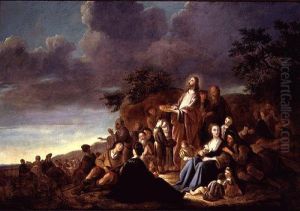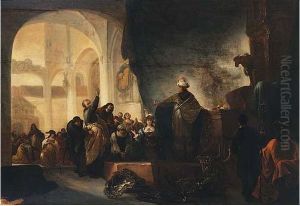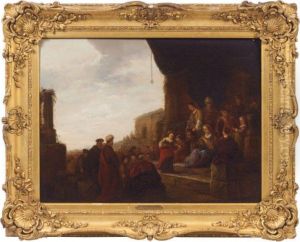Adriaen Ii Gael Paintings
Adriaen II Gael, also known as Adriaen van Gael or Adriaen Gael the Younger, was a Dutch painter and engraver born around 1588 in Antwerp, a city then part of the Spanish Netherlands. His life and career unfolded during the Dutch Golden Age, a period characterized by unprecedented wealth, cultural achievement, and artistic production in the Netherlands. Although details about his early life and training are sparse, it is believed that he came from a family involved in the arts, which likely provided him with an environment conducive to developing his artistic talents.
Gael's body of work primarily consists of landscapes, genre scenes, and occasional religious subjects, reflecting the popular tastes and interests of the period. His landscapes often depict the Dutch countryside with meticulous attention to detail, capturing the serene beauty and flatness of the terrain, interspersed with waterways and populated with figures going about their daily lives. These works demonstrate a keen observation of natural light and shadow, contributing to the overall sense of harmony and tranquility.
In addition to landscapes, Gael's genre scenes offer a glimpse into the everyday life and customs of 17th-century Dutch society. These paintings are valued not only for their artistic quality but also for their historical significance, providing insights into the social and cultural norms of the time. Gael's skill in depicting textures, from the luxurious fabrics of the subjects' clothing to the interiors of Dutch homes, showcases his meticulous approach to painting.
Despite his contributions to the Dutch Golden Age of painting, Adriaen II Gael did not achieve the same level of fame as some of his contemporaries, such as Rembrandt or Vermeer. However, his works are appreciated by art historians and collectors for their beauty, craftsmanship, and as part of the broader narrative of Dutch art history. Gael's death is estimated to have occurred around 1660, and while he may not have been celebrated as a master in his own time, his paintings continue to be studied and admired for their contribution to the golden age of Dutch painting.


